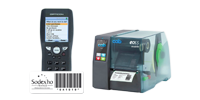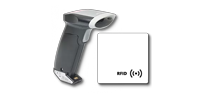Identification wristbands in hospitals are a crucial identification tool in terms of identity surveillance for health centres.
Unlike the successful French TV series Les Bracelets rouges, not all patients have a specific coloured bracelet to indicate a disease.
What is the purpose of the identification wristband ?
A patient may stay in different hospital departments and be treated by many professionals (administrative staff, nurses, doctors, etc.). It is therefore imperative that the patient’s identity and history be checked to avoid any risk of medical error.
It is for this reason that the HAS (Haute autorité de santé) imposes a unique and reliable identification of patients throughout their stay in health establishments. Within the framework of the certification of establishments, the national authorities have decided to set up identity surveillance programmes via the system of patient identity hospital wristband. These hospital wristbands must be put in place as soon as the patient is first treated.
The wristbands are tamper-proof, tear-proof and water-resistant, ensuring reliable identification and reducing the risk of error to zero. The identification of patients is facilitated in all situations: surgery, in the room... Having access to your file only thanks to your identification wristband, facilitates the work of professionals and they are constantly informed against specific indications (allergy, intolerance etc).
Often equipped with a barcode, the medical wristband allows you to quickly consult and update your computerised medical file. Data collected during examinations are added to the file, so all professionals in the institution will have access to the same information.
All inpatients, including emergency and outpatients, are concerned, except for residents of the Establishments for the Elderly (Ehpad) and Psychiatry.
The hospital wristband is therefore a simple patient traceability tool that guarantees patient safety by easily communicating basic file information and giving direct access to the file thanks to the barcode.
Information on the wristband to be indicated on your identification bracelets 
The High Authority of Health does not impose the information to be put on the wristbands. The management of the wristbands differs according to the system of each establishment. Hospitals that have adopted identification wristbands generally use 1D or 2D barcodes to facilitate the accumulation and circulation of information. This means that the record can be viewed on all the equipment in the facility, all that is required is a barcode reader. The ideal device is a small barcode terminal, which is easy to slip into a pocket and very light.
However, hospitals write the patient’s crucial information directly onto the wristband:
- Patient’s first and last name
- his or her PPI (permanent patient identifier)
- gender
- blood type
- date of admission
- date of birth
The advantage of the hospital wristband is that, once fitted, it cannot be removed or exchanged. The tamper-proof snap closure is very resistant to traction and adapts to all body types thanks to its multiple closure points.
Colour codes for hospital emergency wristbands
In France, there is no consensus among health centres on the colour of wristbands. As a general rule, all patients are fitted with a white or blue wristband, which is put on on arrival. The paediatric ward often has different pink wristbands.
There are no studies showing the effectiveness of different colours in patient management. However, the American Hospital Association (AHA) recommends the use of colour-coded wristbands in the medical environment so that all medical staff speak the same language:
- Red: specific allergies
- Yellow : for patients at risk of falling
- Purple: do not resuscitate
- Rose: limb restriction
- Green: latex allergies, very useful when handling patients with latex gloves
Wristbands are simple and inexpensive items that can save healthcare workers time. With good organisation within the health care organisation, medical errors could be avoided.


















